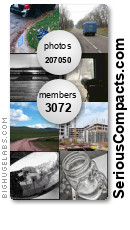In Part 4 of the shootout, we'll look at the Canon G10 and Leica D-LUX 4 (Panasonic LX3) performance in low light at different ISO settings. Two things should be considered in this comparison:
- The D-LUX lens is about 2/3 stop faster at any given angle of view, so comparing the two cameras at the same ISO may not reflect the real life situation, where one is likely to need a higher ISO with the G10 than with the D-LUX.
- DxOmark found an approximate one stop disparity between the measured and reported (manufacturer) ISO at any given setting on the LX3, a disparity that they did not find with the G10. In other words, according to DxOmark, what the LX3 reports as ISO 400 is really ISO 200, 800 is really 400, etc. Click here to see their results. According to those data, we should really be comparing manufacturer ISO 400 LX3 files with manufacturer ISO 200 G10 files (statement edited after correction in comments), and so forth. However, shooting both cameras with manually matched exposure settings (f-number and shutter speed) and the same reported ISO resulted in the same resulting apparent exposure. Thus, assuming that 1) neither manufacturer is misrepresenting the shutter speed and/or aperture setting, and 2) that DxOmark is correct in their sensor analysis, it follows that somewhere in the processing pipeline, the LX3 data is getting pushed to the appropriate exposure index. Therefore, the assumption in the following comparisons is that, for practical purposes, the D-LUX 4 reported ISOs are accurate.
- F-stop, shutter speed, and ISO were manually set identically for both cameras.
- The D-LUX 4 was used at approximately 35mm equivalent field of view (according to the in-camera JPEG, which means that the RAW data is slightly wider) and 4:3 aspect ratio to match the field of view of the G10.
- All files were processed in Raw Developer (Iridient Digital) with custom white balance, sharpening disabled, noise reduction disabled, and otherwise default settings.
- A single, sunlight balanced lamp was used to provide lighting.
- G10 files were downsized using Photoshop Bicubic to match the native size of the D-LUX 4 files.
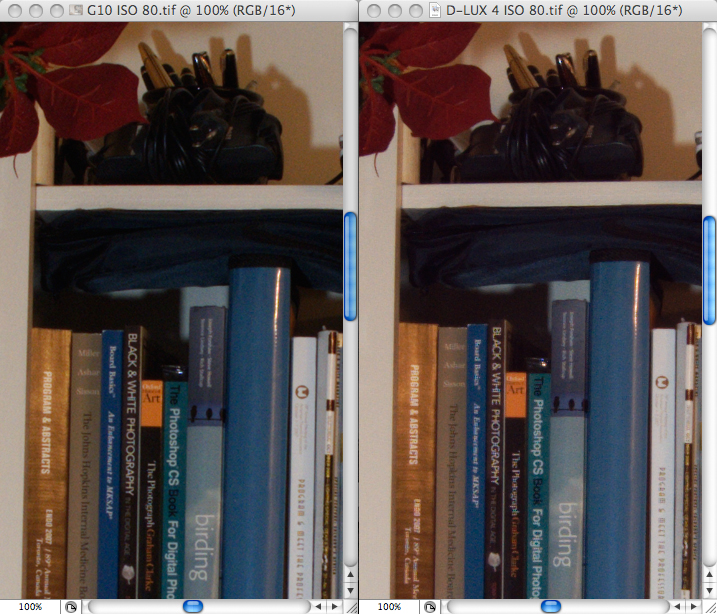
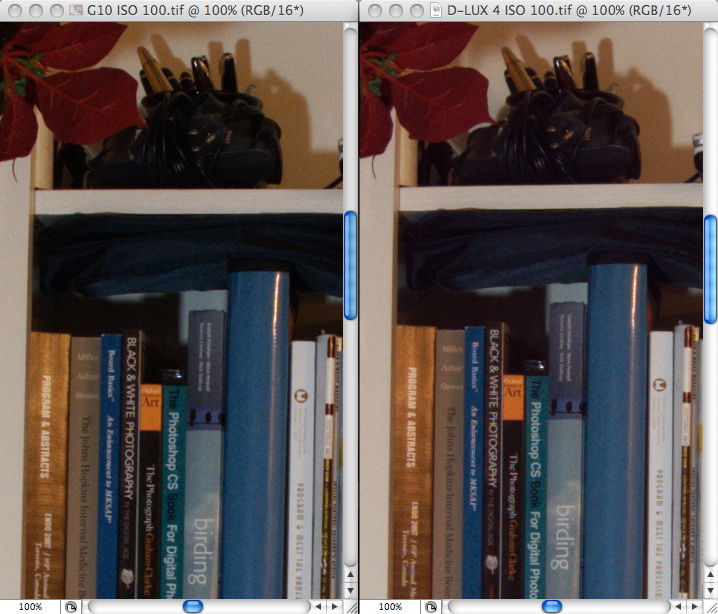
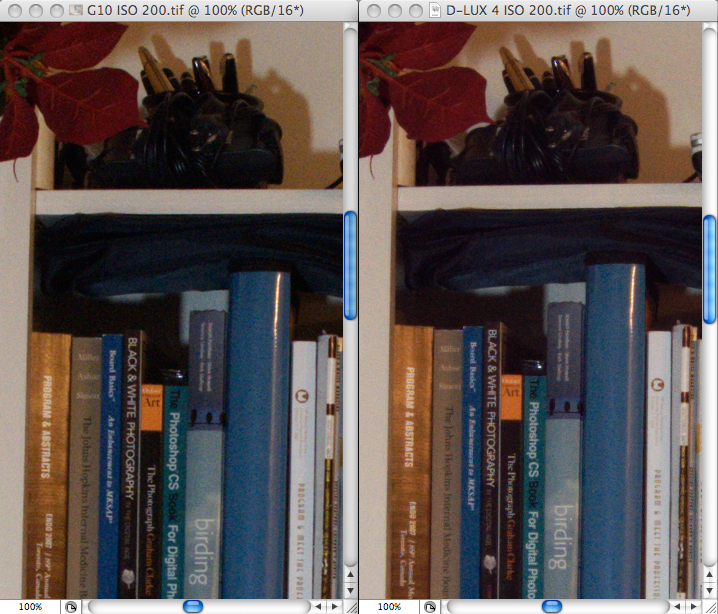
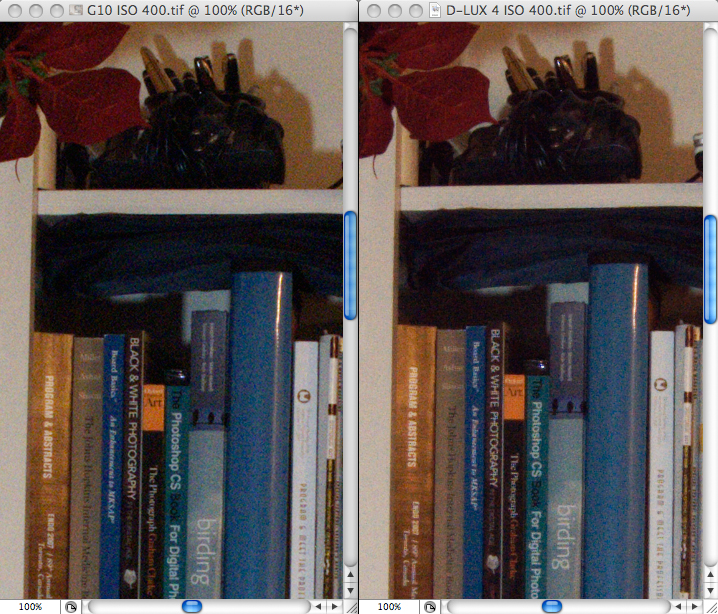
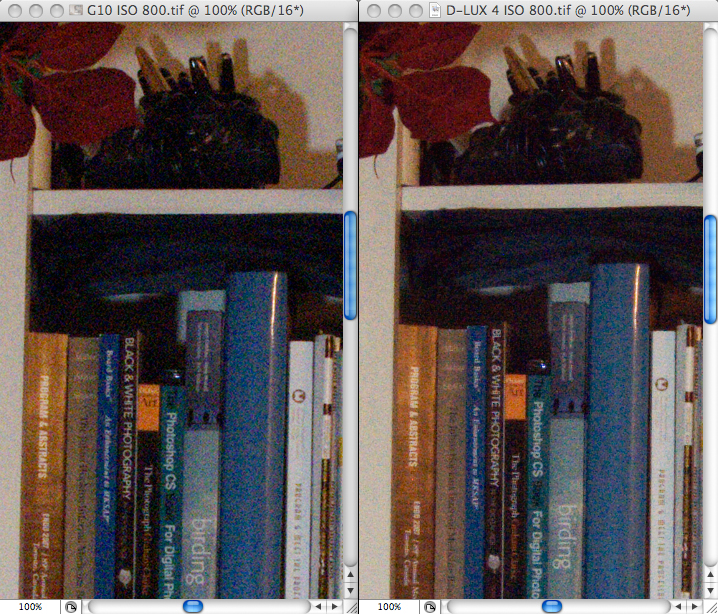
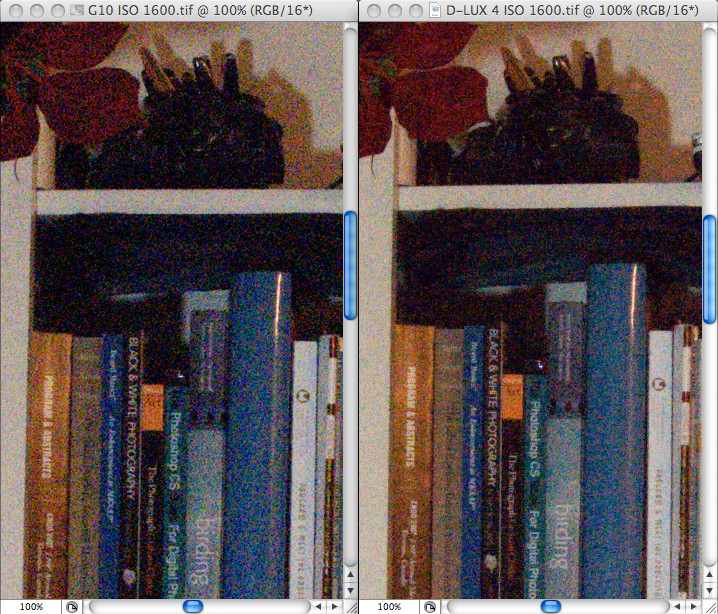
I'd say the D-LUX 4 has a slightly better showing at high ISO in these comparisons, but there isn't much in it. However, taking into account both the faster lens and the slightly better sensor performance, the D-LUX 4/LX3 gives one about a one stop advantage over the G10 in low light. Bottom line: In typical use, I noticed a higher percentage of low light keepers with the D-LUX 4 than with the G10.
You can download all the RAW files below. There are five zip files:
Leica-1.zip contains ISO 80, 100, and 200 D-LUX 4 files.
Leica-2.zip has ISO 400, 800, and 1600 D-LUX 4 files.
Canon-1.zip has ISO 80 and 100 G10 files.
Canon-2.zip has ISO 200 and 400 G10 files.
Canon-3.zip has ISO 800 and 1600 G10 files.

